6 Tips to Learn Songs Faster On Guitar
Author: Erik Ringstad
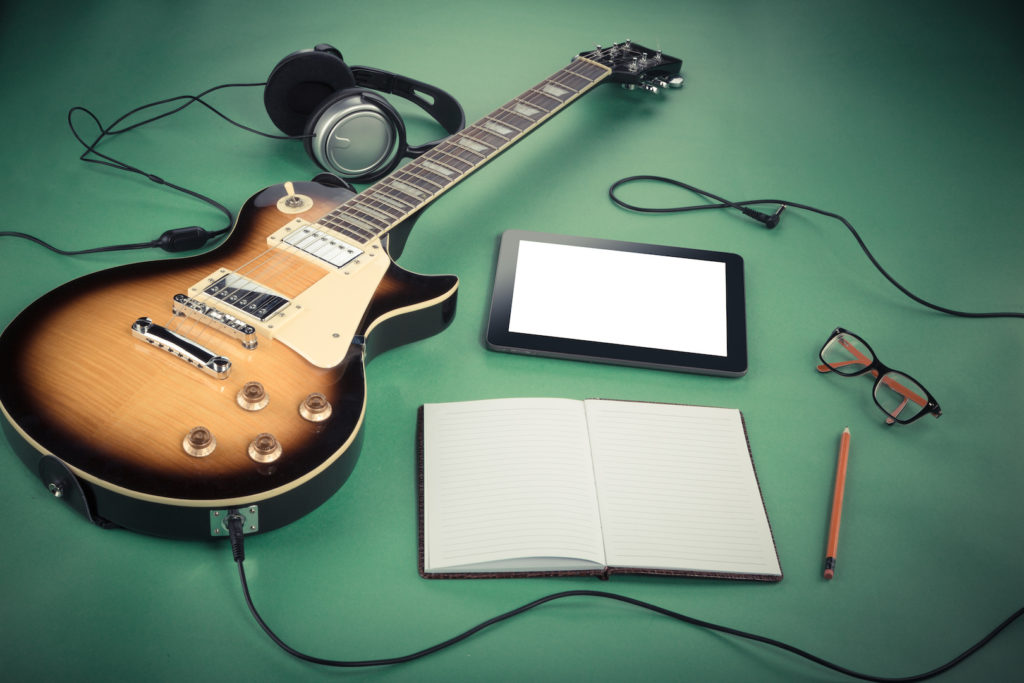
If you are like many guitarists, you have learned plenty of riffs, chords and chord progressions etc., but have not necessarily learned many complete songs from start to finish accurately. What often happens is before a player gets a whole tune down, he or she gets sick of it and moves on to another song.
Is this you? If so, read on!
Often, this happens because of inefficient use of valuable practice time. To keep a track of your daily practice routine, Uberchord App (click for free download) has a feature where you can set your own reminders and goals and has a “daily workout” feature which trains you on your chord changes.
In this lesson, we will discuss some strategies for learning complete songs faster. The time it takes, of course, will depend on experience level and the amount of practice time you put in, but there are some general strategies you can use to help speed up the process.
Learn to play Guitar on your mobile
To begin with, you need to select a song to learn. You should try to select a song that is not beyond your ability level in order to learn it more quickly (as opposed to having to build up the skill level to play the song while you are actually learning it, which often leads to the very problem we are trying to avoid here). Let’s assume you are not going to write a chart for the tune or use music theory to understand the tune better (as some professional musicians might do). Pick a song you really like. So, once the tune is picked out, then what?
1. LISTEN TO THE SONG ON LOOP
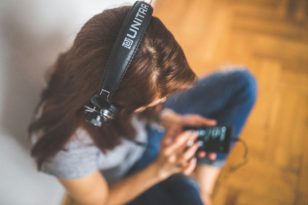 If you haven’t done so already, listen to the song as much as possible, and when you do, try to focus on one element of the song at a time, such as the guitar part (we could refer to this as listening selectively), or perhaps the bass part if there are sections of the tune with no guitar.
If you haven’t done so already, listen to the song as much as possible, and when you do, try to focus on one element of the song at a time, such as the guitar part (we could refer to this as listening selectively), or perhaps the bass part if there are sections of the tune with no guitar.
Listen to the song as much as possible, and when you do, try to focus on one element of the song at a time, such as the guitar part.
You may be able to EQ or balance your audio source to optimise specific instruments. What exactly is going on with the guitar part under the vocals where it is less prominent? What effects are being used? Is the guitar part fingerpicked or flatpicked? Are open strings being used? The more selective listening you do, the easier it gets to recognise what you are listening to.
Another very important thing to listen for is the form of the tune, or the order of the verses, choruses, bridges, interludes etc.. Is there an intro? An outro? What are the chords under the solo and are they playing the verse or chorus progression, or doing something different? Are there key changes? If you cant keep track of the form, try to write it down to help remember it for now.
Pro Tip: So, you may say, when can I find time to do all this listening? Well, if you commute, that is a great time to do it, if you exercise that is another good time. Both of these situations should give you time to listen repeatedly to a tune, but any down time will do as long as you have the energy to focus.
2. DIVIDE AND CONQUER THE SONG & THE CHORDS
Now that you have listened to the song enough to know it really well, it’s time to start playing it. Let’s say for instance, that you have a song with an
Intro – verse – chorus – verse – chorus – bridge – solo – chorus and outro.
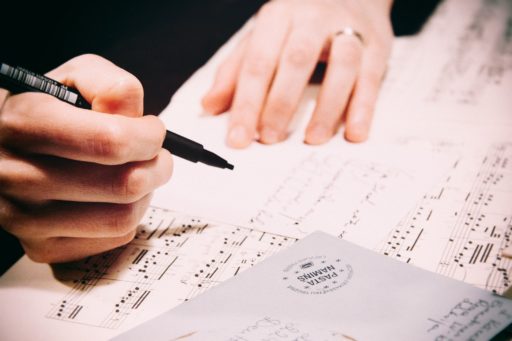 A common mistake players make is that they try to learn an entire song by just playing all the way through it a few times.
A common mistake players make is that they try to learn an entire song by just playing all the way through it a few times.
A much more effective strategy is to learn a little bit at a time, mastering each part before moving on to the next (or, divide and conquer!). You might try to learn one section of the tune per practice session. When breaking a section down like this it may mean you learn one measure at a time, or may break it down even further, depending on the difficulty of the tune of course.
If you have a 4 measure intro, learn a measure (divide), then the 2nd measure, then try to “link up” those two measures. When you can do that, add the 3rd measure and link it up to the other measures learned already, and finally add the 4th measure and link that up with the 1st 3 measures. Work on it until you can play it easily. Keep doing this until you know you have that intro down. Accurate repetition is key here. And if you get tired or feel like you are losing focus, take a break. Unfocused practice time will not be as productive, so go do something else, or rest, and then come back to it refreshed and ready to work on it some more. And make sure you get it right!
Pro Tip: There are many inaccurate tabs out there online, so try to find accurate music if you are not learning it by ear. It is much better to get it right the first time then spending your time practicing a mistake, and then spending even more time unlearning it!
3. FEEL THE SONG: Listen to the song again with eyes closed
 So let’s say you have learned the intro, verse, chorus, and bridge of the song and can play it in tempo with reasonable accuracy.
So let’s say you have learned the intro, verse, chorus, and bridge of the song and can play it in tempo with reasonable accuracy.
Listen to the song again with eyes closed.
Are you nailing the “feel” or “groove” of the song, or just playing the notes accurately but maybe not as musically/expressively as could be?
Do you have the tune down well enough yet to be able to add those extra elements that give the song it’s distinctive feel? This may take awhile but it will be worth it in the end and chances are, you will start adding those elements in naturally as you progress toward getting the tune down.
Pro Tip: While practicing your guitar, look away or close your eyes and listen carefully to what you are playing, hear the chords, chord changes and the melody.
4. PICTURE YOURSELF PLAYING THE SONG
 This you can do without a guitar in your hands.
This you can do without a guitar in your hands.
Try to picture yourself playing the tune all the way through perfectly. Picture your fingers on the fretboard, even picture stepping on effects pedals when the guitar tone goes from clean to distorted for instance, and picture the sound of your guitar playing the tune perfectly.
The idea is to simulate a perfect performance of the tune in your mind.
Sing the tune to yourself while you do this (you don’t have to be a singer to do this).
This is another technique you might employ while commuting.
Pro Tip: Keep you guitar away, close your eyes and hum the melody and the tune of the song.
5. CHANGE THE KEY, MAKE IT EASIER
This may not always be practical (particularly when open strings are involved) , but it is a great way to find out if you really know a song well. Vocalists often need to change the key of a song anyway to put it into the correct range for them to sing it, so this is a very good skill to have in general for a musician.
Pro Tip: Uberchord App has a free guitar tuner with all kinds of different tunings. Download it. Plus, there are various websites and apps that provide variety of chord progressions of songs in different keys than the original.
6. PERFORM THE SONG FOR YOUR FRIENDS
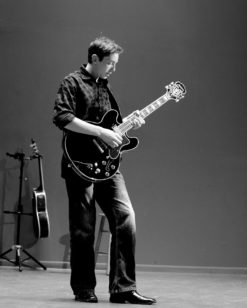 And finally, perform the entire song, start to finish.
And finally, perform the entire song, start to finish.
There does not have to be an audience there (although the pressure of performing for an audience generally compels a player to practice more, so they can really nail it on the gig). You could try shooting a video of yourself playing the tune, and then listen back to it afterwards and review your performance, tighten up those parts if needed, and then try it again until you have it down. As painful as the thought of doing this is for many players, it can be extremely beneficial as long as you are constructive and realistic in your own critique.
Pro Tip: You might also perform the tune for friends, family, or anyone else who wants to listen. Maybe there is an open mic nearby where you could try it out?
Whichever strategy you choose, give yourself a pat on the back for your efforts, and know that you will get quicker at learning complete songs by employing these methods. And…
Congratulations! You now have another complete song to add to your repertoire…
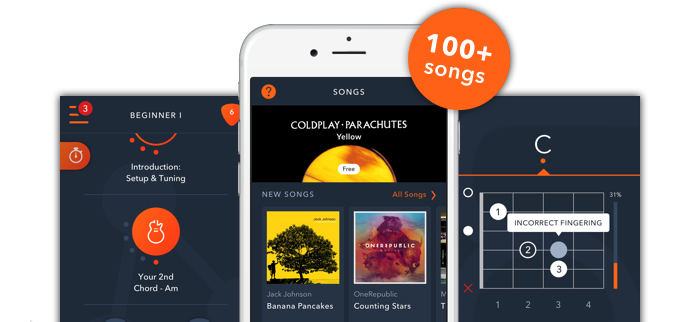



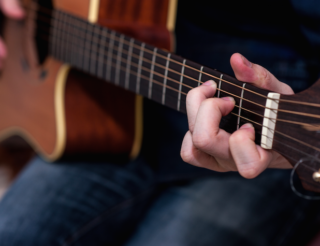
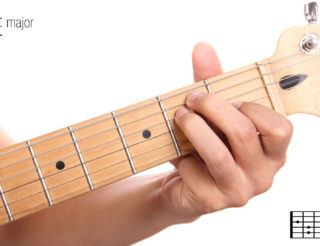



That is true… Now i learned how to play well